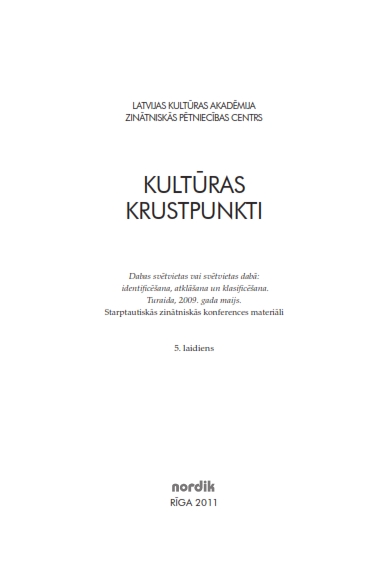Inhabitants of the Holy River of Novgorod: the Volkhov in the Historic, Cultural and Mythological Tradition of Medieval Novgorod
Inhabitants of the Holy River of Novgorod: the Volkhov in the Historic, Cultural and Mythological Tradition of Medieval Novgorod
Author(s): Elena A. TianinaSubject(s): Cultural history, Customs / Folklore, Ethnohistory, Local History / Microhistory, Middle Ages, Cultural Anthropology / Ethnology
Published by: Latvijas Kultūras akadēmija
Keywords: River Volkhov; Russia; holy river; culture; mythology; folk tradition; Middle Ages;
Summary/Abstract: The River Volkhov, connecting Lake Ilmen and Lake Ladoga, used to be a transportation line of utmost importance in northern Russia (Fig. 1). As early as the 8th–9th century AD, the water route along the Volkhov was mastered by the Slavs – migrants from the southern shores of the Baltic Sea. During the Viking epoch, two major townships of northern Russia appeared at the head and the outfall of the Volkhov: they were Ladoga and the predecessor of Novgorod, Rurik’s Township. And in the second quarter of the 10th century Novgorod the Great was founded. For the city’s population, the River Volkhov was not only the basis of their economic life, but also a sacred natural feature. [...]
Journal: Culture Crossroads
- Issue Year: 5/2011
- Issue No: 1
- Page Range: 122-131
- Page Count: 10
- Language: English

